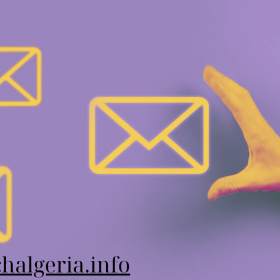Automated email campaigns are powerful tools that allow businesses to communicate with customers in a timely and efficient manner. By setting up automated workflows, you can send personalized and targeted messages at the right time, improving engagement, increasing conversions, and building stronger relationships with your audience.
1. Understanding Automated Email Campaigns
Automated email campaigns are pre-scheduled email messages triggered by specific user actions or time intervals. These emails can be used for a variety of purposes, including welcoming new subscribers, nurturing leads, recovering abandoned carts, or sending post-purchase follow-ups. The goal is to create a seamless communication flow that feels personalized and timely to the recipient.
Why Automation Matters:
- Saves Time: Once set up, automated campaigns run on their own, freeing up time to focus on other tasks.
- Consistency: Automation ensures consistent communication with customers without the need for manual intervention.
- Improved Engagement: Sending relevant emails based on user behavior increases open rates, click-through rates, and overall engagement.
2. Identifying Key Campaign Types
Different types of automated email campaigns serve various purposes. Depending on your business goals, you can choose from a wide range of campaign types to enhance your marketing strategy.
Common Automated Campaigns:
- Welcome Series: A sequence of emails that introduces new subscribers to your brand and encourages them to take their first action, whether it’s making a purchase, downloading a resource, or exploring your offerings.
- Abandoned Cart Recovery: Emails sent to customers who have added items to their cart but haven’t completed the purchase, nudging them to return and complete the checkout process.
- Post-Purchase Follow-Up: Emails thanking customers for their purchase, providing order details, and encouraging them to leave a review or explore related products.
- Re-Engagement Campaigns: Targeting inactive subscribers with special offers or updates to bring them back into the customer journey.
- Birthday or Anniversary Emails: Sending personalized greetings and exclusive offers to celebrate customer milestones.
3. Segmenting Your Audience for Personalization
Segmentation is key to creating successful automated email campaigns. By dividing your email list into distinct groups based on specific criteria, you can tailor your messages to address the unique needs and behaviors of each group.
Effective Segmentation Strategies:
- Demographics: Age, gender, location, and other demographic factors can influence the type of content your audience prefers.
- Behavior: Segments based on user actions, such as website visits, previous purchases, or engagement with past emails, allow you to send highly targeted messages.
- Lifecycle Stage: Customers at different stages of the buying process (leads, prospects, repeat customers) require different messaging to move them further down the funnel.
Benefits of Segmentation:
- Higher Engagement: Personalized emails are more relevant to the recipient, increasing open and click-through rates.
- Reduced Unsubscribes: Sending tailored content minimizes the risk of recipients opting out due to irrelevant messages.
4. Crafting Compelling Email Content
Even with perfect automation, the content of your emails will determine the success of your campaign. Emails should be visually appealing, easy to read, and focused on delivering value to the recipient.
Tips for Effective Content:
- Personalization: Use the recipient’s name, reference past interactions, and customize content based on their preferences.
- Clear Call to Action (CTA): Every email should have a clear, actionable CTA, whether it’s encouraging users to make a purchase, sign up for a webinar, or visit your website.
- Value-Driven Messaging: Focus on providing value to the recipient, whether through exclusive discounts, useful information, or timely updates.
Example:
- Subject Line: “We Miss You! Here’s 10% Off to Welcome You Back”
- Email Body: Highlight the discount, remind the customer of items they’ve shown interest in, and include a clear button to claim the offer.
5. Setting Up Automation Triggers
Triggers are actions or events that initiate an automated email sequence. By setting up the right triggers, you can ensure that your emails are sent at the optimal time when a user is most likely to engage with them.
Common Triggers:
- User Actions: Email clicks, website visits, abandoned carts, or purchases can trigger personalized follow-up emails.
- Time-Based Triggers: Emails can be scheduled to send after a specific time period, such as a follow-up email one week after purchase.
- Behavioral Triggers: Emails triggered by specific behaviors, such as browsing a particular category, allow you to send highly targeted recommendations.
6. Monitoring and Optimizing Campaign Performance
Once your automated email campaigns are live, monitoring their performance is essential to ensure they are delivering the desired results. Tracking key metrics such as open rates, click-through rates, conversion rates, and unsubscribe rates will help you determine what’s working and what needs improvement.
Metrics to Track:
- Open Rate: Measures how many recipients opened your email. A low open rate might indicate the need for more compelling subject lines.
- Click-Through Rate (CTR): Tracks the number of recipients who clicked on a link within the email. If your CTR is low, consider optimizing your email copy or CTA.
- Conversion Rate: Measures how many recipients took the desired action after clicking through. Low conversion rates might require revisiting your offer or landing page.
How to Optimize:
- A/B Testing: Experiment with different subject lines, CTAs, and email designs to see which version performs best.
- Refining Segments: Continuously refine and update your audience segments to ensure your emails remain relevant.
- Timing Adjustments: Test different sending times to determine when your audience is most likely to engage.
By implementing automated email campaigns, you can create a more efficient and effective way to connect with your audience, nurture leads, and drive sales. Personalization, segmentation, and ongoing optimization are key to maximizing the success of your email automation efforts. When done right, automated email campaigns not only save time but also deliver consistently better results by providing the right message at the right moment.


